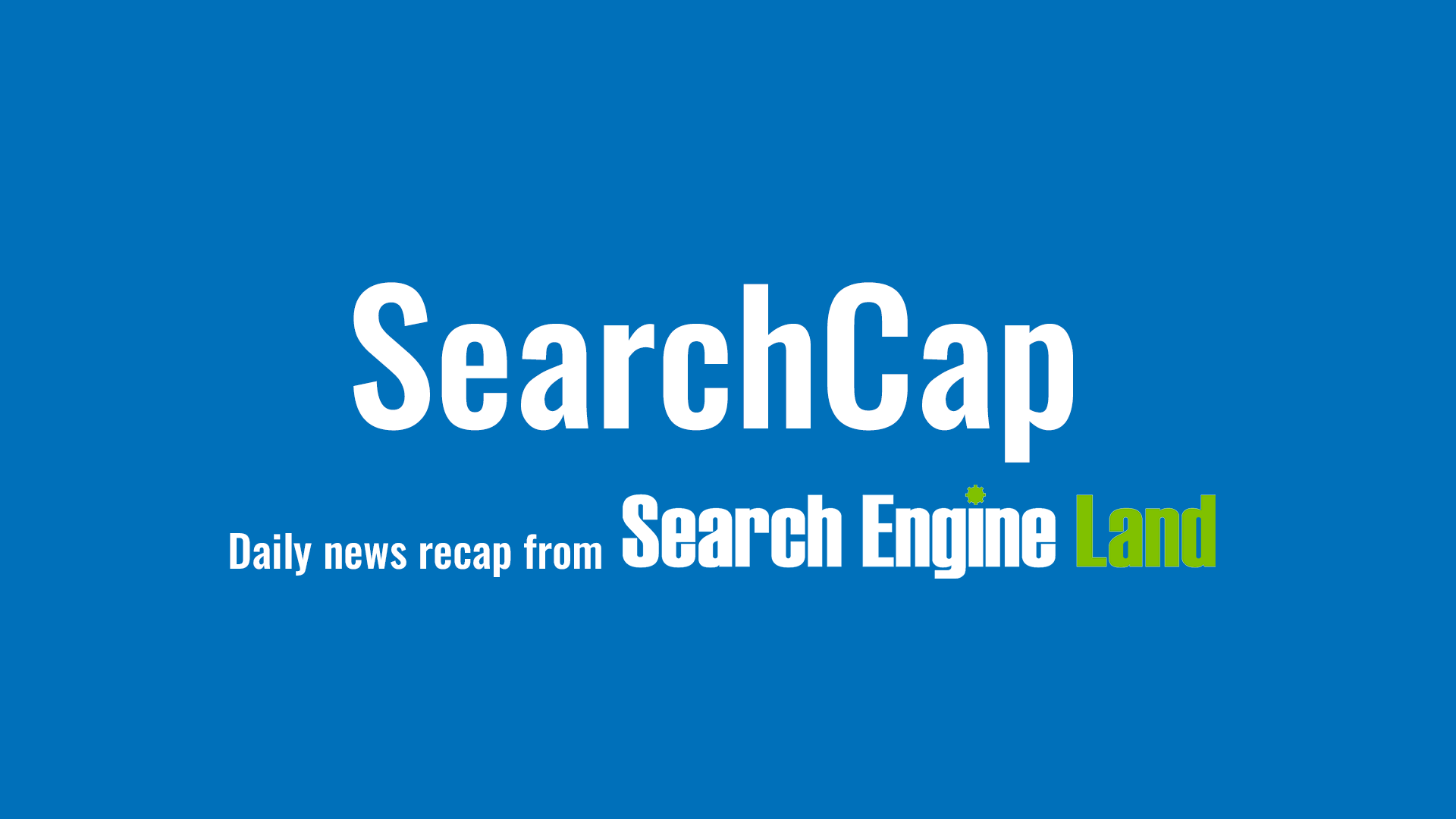 Last month, Google began transitioning accounts from the old AdWords (now Google Ads) interface to the new one exclusively. The purpose of this update is to provide advertisers with more resources to manage the growing complexities of paid search advertising.
Last month, Google began transitioning accounts from the old AdWords (now Google Ads) interface to the new one exclusively. The purpose of this update is to provide advertisers with more resources to manage the growing complexities of paid search advertising.
The new Google Ads interface contains many new features aimed at helping advertisers gain the insights needed to drive performance in a hyper-competitive environment. The new interface also contains artificial intelligence (AI) and machine learning features that automate key optimizations, freeing up advertisers to focus on account strategy and analysis.
Let’s take a look at the benefits of the new reporting and automation features.
Standard dashboard
After logging into a Google Ads account, the first thing you now see is the account overview. This overview is displayed in a visual dashboard format that provides standard performance metrics segmented by ‘”looks,” such as new words appearing in recent searches, most shown ads, auction insights and other key metrics that help advertisers quickly discern what overall account performance is.
The overarching benefit of this new dashboard is its ability for advertisers to more quickly understand what direction performance is trending so quicker optimization decisions can be made. Paid search has always been data-heavy, which often leads to marketers suffering “paralysis by analysis.”
The new interface addresses this issue by providing segmented metrics and recommended actions to take (further explained in the next section of this article) so advertisers can be quickly steered towards focusing on what’s most important within an account.
Below is a sampling of some of the data available in the overview that can be leveraged.
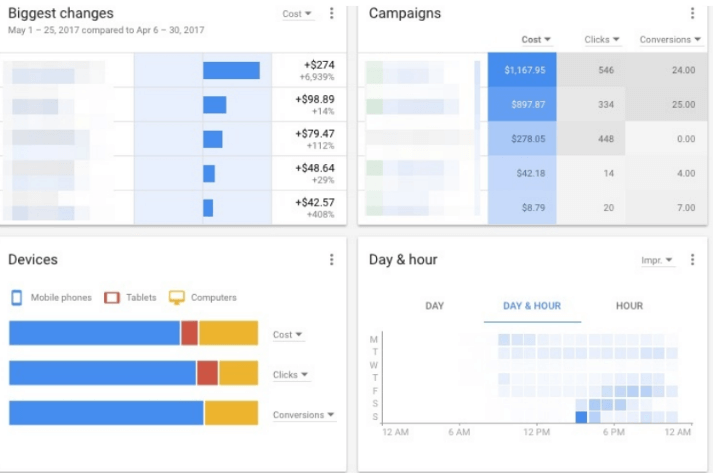
Recommendations engine. The new interface provides a robust recommendations engine that recommends optimizations based on a campaign’s actual performance versus its goals. This engine also allows for automated optimizations that can be implemented with just a couple of clicks.
The benefit of this recommendations engine is it gives PPC marketers optimization guidance which helps answer the question, “What do I do with this data?”
The ability to view “all recommendations” or recommendations segmented by categories such as bids and budgets, keywords and targeting, ads and extensions, and critical fixes that need to be made helps marketers focus on whatever area of the account needs the most help.
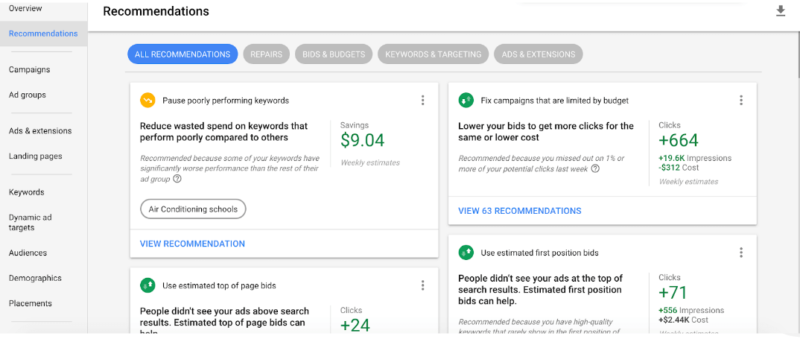
Custom dashboards. Another benefit of the new interface is the ability to create custom dashboards. Within the dashboard are dozens of data fields which can be mixed and matched in any combination to provide a real-time dashboard containing the performance metrics that are most important to you.
The standard dashboard provides a ton of information aimed at helping you interpret overall account performance and identifies high-level trends and insights. What the standard dashboard doesn’t provide is a view into the underlying drivers and leading indicators of performance. The custom dashboard enables advertisers to customize reporting and track it in real time. That helps accelerate the advertiser’s ability to put together the strategies and tactics needed to meet your account’s performance goals.
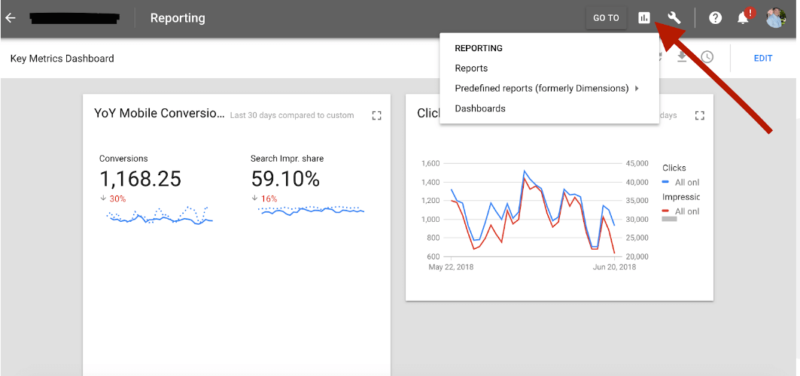
Predefined reports. I loved the old dimension’s tab in the former ads user interface (UI). I could quickly scan the data tables and easily identify trends, opportunities and performance anomalies. When I learned the dimensions feature was being retired, my fear was that advertisers would lose critical pieces of information needed to make quick optimization and expansion decisions.
Fortunately, the dimensions tab was replaced in the new user interface with a new feature called “predefined” reports. In my opinion, predefined reports offer more robust information than the dimensions tab. Predefined reports provide the same information as the dimension’s data but allow you to view this data graphically. When analyzing data for trends and insights, it’s much easier to view data visually to quickly glean the information needed to make strategic decisions.
Below is an example of a mock predefined report I created. This report visually demonstrates the correlation between average position and conversion volume by day of the week. The benefit of viewing this data visually is that I can quickly identify what days are performing best in terms of average position and conversion volume. Had I tried to do this in a raw data format in the old UI, I would not have been able to gain insight into the relationship between the average position to conversion volume by day of the week.
The predefined report brings an extra element of insight that was not previously available.
One thing to note about predefined reports is that they’ are static. You’ll have to manually change the report’s date range for data to refresh to the latest numbers.
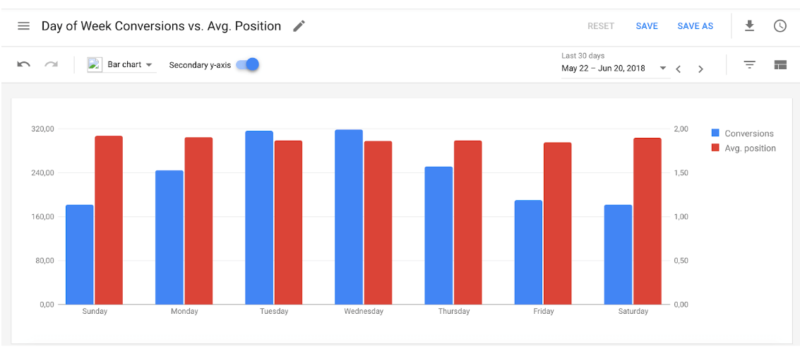
Enhanced demographic targeting. Demographic targeting within the old AdWords has been available for quite a long time. However, in the old user interface, it was not possible to combine demographics, so it was not easy to understand the full scope of your account’s demographic performance. The new interface provides functionality that allows advertisers to create demographic combinations. These combinations provide deeper insight regarding your account’s demographic performance.
For instance, I was recently analyzing demographic performance for an account and applied a combination of gender and age. Based on this analysis (to my pleasant surprise), I learned that the 65+ female demographic outperformed expectations. The account is a school, and I had assumed that older demographics wouldn’t perform well. But based on this new insight, I’m currently in the process of refocusing the strategy to account for this new piece of information.
Conclusion
Pay-per-click (PPC) managers and their associated stakeholders crave deep insights. Uncovering critical new pieces of information that can be gleaned and leveraged to gain a competitive advantage is crucial to success. The Google Ads team understood this problem and developed a set of reporting and insight features that address key problems, such as identifying what’s working and what’s not in a more granular way.
Identifying these areas in a more granular way gives advertisers more precise guidance regarding what levers to pull in an account to increase revenue, improve return on investment (ROI) and positively demonstrate the value of PPC to stakeholders.
Contributing authors are invited to create content for Search Engine Land and are chosen for their expertise and contribution to the search community. Our contributors work under the oversight of the editorial staff and contributions are checked for quality and relevance to our readers. The opinions they express are their own.


